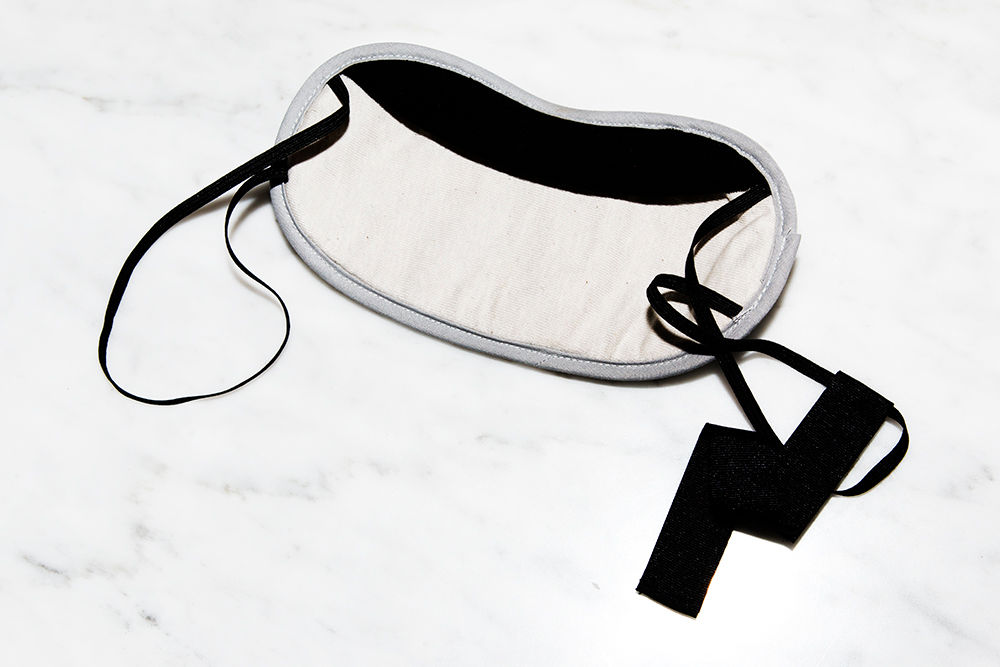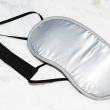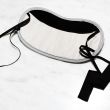Occasionally I get horrible migraines. I’ve sat in pitch-black rooms, taken every kind of medicine, pounded more water, put a warm or cool compress on my head, played around with essential oils, taken showers, sipped ginger tea...Most of these are comforting, but that’s it. In the past I would drink red wine, not to soothe the ache but as a last-ditch attempt to sort of tuck me into an inevitable state of sleep. Often, there's nothing I can do but wait it out.
Several migraines ago, when, once again, nothing was working, I was so desperate that even the darkness of my room at night did not seem dark enough. To keep my eyes shut, I put on my Morihata Binchotan Eye Mask that I'd originally bought to help deflate my puffy eyes during allergy season and while flying.
During these flair-ups, I have no perception of time. Everything around me is fast while I continue to drag on, so I have no idea for how long I had the mask on, but it felt like within the sound of a car passing out my window, and the siren blaring in my skull was gone. More distinctly, it felt like someone had switched off all the lights in my apartment, on my block, and in my city. Everything was quiet, obscured, and everything was OK.
It’s hard for me to say that I believe in anything as 100 percent fact, so I’ve tried to justify all the reasons why this eye mask works so well. Binchotan charcoal is created by burning oak branches at around 2,300 degrees Fahrenheit, and then smothering them quickly with dirt. The process makes the charcoal porous, which helps pull chemicals out of water, thereby purifying it. The Morihata Binchotan Eye Mask contains micro-sized powdered versions of this charcoal that are imparted into the material within the four layers of fabric. Binchotan is supposed to stimulate blood flow and ease pressure, and has a lot of supposed restorative and healing properties.
Apart from that, it’s definitely the most plush and padded of any mask I’ve ever tried. The front is silk and the back is a very soft cotton. There’s also an additional thick black strip of fabric that lines the bottom of the mask, which adds extra protection from light, and even more padding. This all could be a case for design—that the thick and soft fabric lightly applies enough pressure to that area, which is what really helps.
My only real qualm with this mask is that the back strap could be better. I have a pretty small head with thin and straight hair, so I have to quadruple-tie the Velcro in the back. Which means by morning it’s usually caught in my hair or lost in my bed. I wish it were more of a sliding adjuster, like on a bra strap, but by morning my migraines are still gone and I’ll take whatever kind of immediate relief I can get.
—Lisa John Rogers
Lisa John Rogers is a writer based in Detroit, where her car triples as her office and her vanity. It always has the best lighting.
Photo by Tom Newton.
Put all your essential oils to good use with this DIY aromatherapy trick.




